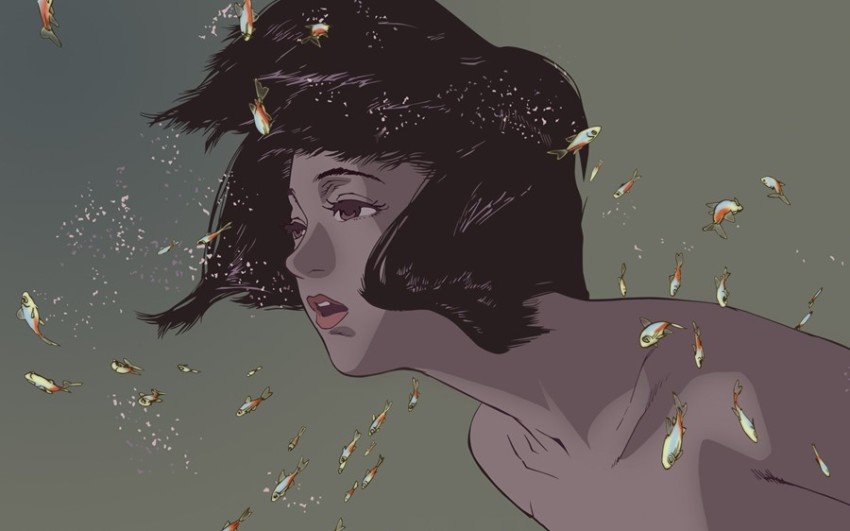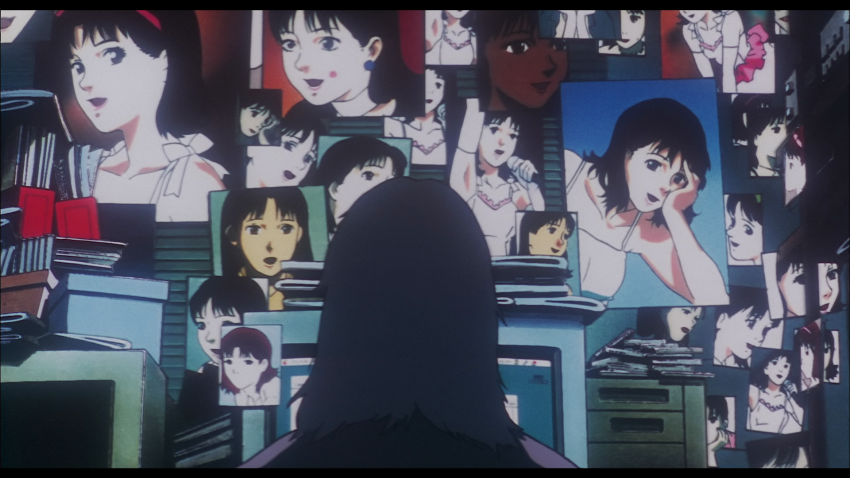Perfect Blue: Deleted Scenes
March 25, 2019 · 0 comments
By Andrew Osmond.
 Anime Limited is releasing Satoshi Kon’s classic Perfect Blue in a new “Ultimate” edition, with fresh revelations about the film’s genesis. Spoiler warning: this article assumes familiarity with the film; for an introduction to Perfect Blue, see here.
Anime Limited is releasing Satoshi Kon’s classic Perfect Blue in a new “Ultimate” edition, with fresh revelations about the film’s genesis. Spoiler warning: this article assumes familiarity with the film; for an introduction to Perfect Blue, see here.
Anglophone fans already learned more about Perfect Blue a year ago, when the “original” Japanese novel was translated into English, so that anyone could see Kon’s film had no real relationship to it – a blessing, as the book is awful! Kon created Perfect Blue’s script out of more or less whole cloth with Sadayuki Murai, who would collaborate with Kon again on Millennium Actress and with Katsuhiro Otomo on Steamboy. Recently Murai has worked for the Polygon CG studio on Knights of Sidonia, Blame! and the first Godzilla anime film, on which he worked with Gen Urobuchi.
Perfect Blue’s plotting and scriptwriting began in the second half of 1995. In a contemporary interview, Kon said: “Every time we had a draft of the script, Murai and I would take perhaps five or six hours to discuss it. When I understood what he was getting at, it would spin off into weird ideas of my own, so it turned into a kind of negotiation. It was fun and we ended up watching a lot of movies together, with movie scenes and shots becoming out mutual language.”

Kon also emphasised how his and Murai’s ideas were honed down during development. In animation, most cutting is done at the storyboard stage, as animation is so much more costly than live-action. “There were many [storyboard] cuts we had to make,” Kon said. “In the end, I think we had to throw about 100 scenes. Nearly all the missing footage was just there to show the passage of time. We cut several scenes of escalating suspense that were originally to emphasise Mima’s gradually growing fear. It’s very different to bring out the feeling of ‘gradually’ when you don’t have time to do it, so that led us to become bolder, and cut most scenes in which stuff crept up on you.”
The new Anime Limited edition includes a book of Kon’s original Perfect Blue storyboards (in Japanese text only), with a large number of cut scenes. They fall into two types. There are some lengthy “deleted” scenes at the back of the book, but there are also numerous trimmed moments (usually marked “omit” in Japanese) within the main body of storyboards as well. For anyone familiar with Perfect Blue, many of these scenes will feel simply redundant. The long “deleted” scenes, for example, include an extended version (pp.350-57) of the Power Rangers-style (tokusatsu) stage show which opens the film, which in the final version takes all of 30 seconds. I personally see it as a Lemony Snicket-style joke, saying this is not the kind of anime you will be watching. The extended scene ends with the “Ranger” actors briefly meeting the CHAM singers in the dressing room, and wondering who they are.
An “escalating suspense” scene (pp.363-66) would have shown Mima shopping in her habitual supermarket. The deleted scene would have been set in her paranoid phase, when she thinks all the shoppers are watching her. She ends up freaked out by a child sucking a crimson popsicle. The final film has ample moments of this kind; for example, during Mima’s first day on set, and in a commuter train.
There’s a meeting between Mima’s manager Tadokoro and the sleazy photographer Murano (pp.375-78), who creepily declares he doesn’t normally watch TV but makes an exception for Mima because of her “mysterious aura.” Perhaps this line hints that Murano senses Mima’s fracturing psyche, but it’s not followed up. There’s also more bad-tempered arguing between Tadokoro and Rumi over Mima’s future.
The smaller embellishments are more interesting. One (included in the “deleted” section) would have been a moment where Mima, in the depths of delusion, is in her room looking at her fish tank (p.382); suddenly water bubbles come out of her mouth and she floats in air. It would have been a fantasy moment unlike anything in the film as it stands, closer to Gilliam or del Toro.
The other embellishments are in the main storyboards. There’s more early dialogue between Mima and Rumi (p.72), suggesting their genuinely warm relationship. (Note how, even in the last moments, Mima sees Rumi as a horribly ill friend rather than a demented murderess.) There’s also another glimpse of Mima the fangirl (p.76). As well as admiring her co-star Eri, she geeks out meeting a male TV actor, as recorded on the “Mima’s room” website.

During the pseudo-rape scene, many viewers will remember Mima’s “rapist” turning into an embarrassed actor (“I’m so sorry”) when the director cries cut. Kon originally planned to have a woman make-up artist fix Mima’s appearance (p.128) while she’s still lying spread-eagled, which could have diminished the first skin-crawlingly “wrong” moment through repetition.
The “rape” would have originally involved Mima being attacked by two men, one after another. Here the final film’s concision is a mercy; a longer attack might have been a tipping point for many viewers already on the edge. In my book Satoshi Kon: The Illusionist (now out of print), I wrote, “Kon doesn’t keep to the bounds of good taste; he lets the scene run on so that we’re conscious of our disgust.” Another trimmed moment (p.138) has Mima saying goodbye to the studio crew after the shoot – “Have a nice evening.” One crewmember comments, “She is nice, working hard.”
Later, the Double Bind producer confirms that the writer Shibuya had finished his script before he was killed in the elevator. In the released film, it’s unclear who’s writing Double Bind in the later scenes, which perhaps is only fitting. There’s also a deleted moment (p.198) when a minor character (not Mima, Rumi nor Me-Mania) apparently senses the presence of the phantom idol singer Mima. However, this is part of the sequence that has the “real” Mima chasing the phantom and being hit by a truck, so it may be all a dream/fantasy.
During the climactic scenes, there was originally more violence in Me-Mania’s frenzied attack on Mima. Again, one can only say thank heavens for the cutting; I already found the scene “emphatically brutal,” and speculated that it could have been inspired by the assault on Kaori in Akira, directed by Kon’s mentor Otomo.
Notably, Rumi would have claimed a final victim (pp.327-28) while she’s chasing Mima down in the finale – and like all the other murder victims in the film, it would have been male. In the storyboards, Mima runs into a trio of loitering youths and begs them for help, only for Rumi to stab one of them in the throat with her umbrella. Anyone who’s seen the anime Another should find this wincingly familiar.
Following the climax, the film’s coda would have shown a party (p.345) to celebrate Mima’s latest acting triumph, with Mima herself missing, having prioritized seeing Rumi at the psychiatric hospital. Following the last line – “It’s the real me!” – the closing shots (p.348) would have been a conventional anime end, with Mima driving out to a motorway and the image tilting to blue sky. The final film cuts directly from Mima’s line to the end credits, which is both neater and more befuddling for horror fans expecting a cheap last shock.
Andrew Osmond is the author of 100 Animated Feature Films. The Perfect Blue Ultimate Edition, including complete storyboards and many extras, is released on UK Blu-ray by Anime Limited.
Leave a Reply